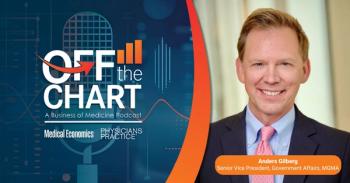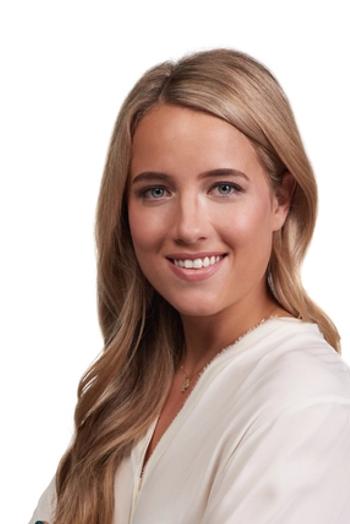
|Articles|September 18, 2020
Leaving the Clipboard at the Digital Front Door: The call to modernize patient engagement
Author(s)Mike Lamb
A single patient-engagement platform can help practices cut operating expenses by up to 50% annually.
Advertisement
It’s an indisputable reality–practically every aspect of our daily lives has gone digital to some degree, if not entirely. How we purchase goods and services, manage our money, and even the way we get our morning coffee is digital. The act of clicking a link, touching a screen, or exchanging texts to get what we need on-demand is so commonplace that it’s become expected. And just about every industry has adapted their practices and business models in response, including retail, hospitality, and financial services. There is, however, one notable exception: healthcare.
Think about it. If you’re trying to decide what’s for dinner, you can pull up DoorDash or Uber Eats on your phone, browse countless menu options, filter by cuisine or rating, order and pay for your meal, and then wait for delivery while receiving regular updates on progress and arrival time via text or email. But suppose you’re a patient going for a physical or a surgery consultation. In that case, it’s highly likely you’re getting paper appointment reminders in the mail, listening to voicemail confirmations from the receptionist, updating your medical history with a clipboard and pen, and communicating with the physician’s office and insurance company via fax to solve claim disputes.
The frustrating truth is that this sector, driven by cutting-edge science and research, has limited its innovation to the lab. The front office that manages operations and interacts with patients is left to rely on old-school paperwork, manual processes, and siloed applications. The cost? According to the Council of Affordable Quality Healthcare, the healthcare industry wastes more than $9 billion annually, continuing with manual processes over electronic. For the individual practice, staffing costs remain higher than necessary, and there are greater likelihoods for error and inaccuracy, rejected claims and bottlenecked throughput, impacting practice profitability and, most importantly, patient care.
Therefore, the onus is on individual facilities and practices to take the reins and force healthcare’s digital transformation. By modernizing their operations, forward-thinking practices will set the example and raise patient expectations, ultimately transforming the industry.
The most significant opportunity for transformation lies in patient engagement and creating a true “digital front door.” From scheduling, notifications, and check-in to data collection, eligibility verification, and follow-up, technology can simplify and personalize every patient touchpoint, driving entirely new levels of efficiency and convenience. The key is for practices to find a single patient-engagement solution that incorporates all these capabilities and combines the entire patient journey in a single platform, one with the built-in flexibility to integrate with other office systems like electronic health records (EHR). This is what creates the seamless patient experience practices and patients seek. Piecing together multiple technologies or automating just part of the process will only make the patient experience feel cumbersome and disjointed.
Of course, some will argue that automating patient engagement creates other issues. They might say it’s too expensive, that it takes away from 1:1 human interaction or that specific demographics like the elderly might be uncomfortable interfacing with technology. And while the arguments are understandable, the data—and countless real-life examples—suggest otherwise.
When it comes to cost-savings, a single patient-engagement platform can help practices cut operating expenses by up to 50% annually, reducing the need to add incremental staff as the business grows or to cover peak periods and vacation schedules. Staffing is a challenge for practices during this post-COVID period, as they manage a backlog of appointments and procedures, often with less staff due to earlier furloughs or layoffs.
Read More: 5 questions to ask about wRVU compensation
Patient engagement also helps practices communicate more strategically. For example, they can communicate with higher frequency and in a more targeted and personalized fashion. And practices using a patient-engagement platform can free up existing staff from administrative paperwork to focus on patient comfort and higher-value interactions, reinforcing a commitment to the high-touch, personal experience.
Again, there’s the argument around older populations and their comfort with technology or their preference for human connection. An AARP report notes that Americans aged 50+ are adopting technology at rates similar to those of 18-49-year-olds. Even more encouraging: 53% of respondents in that age group said they would “prefer to have their health care needs managed by a mix of medical staff and healthcare technology.” And given 85% of Baby Boomers (ages 55-73) have internet service and 68% own smartphones, according to Pew Research , they’ve got the technologies in hand to take advantage.
2020 has put healthcare in the headlines and the frontlines more than anyone could have predicted a year ago, thanks to COVID-19. It forced some segments into overdrive and brought others to a screeching halt. But in either case, it’s led all of us to rethink traditional approaches to patient engagement and reimagine what’s possible. By implementing the digital front door and combining new technologies and automation with the personalized interaction we’ve all come to rely on from our healthcare providers, we’ll turn those visions into a new reality and elevate the patient journey for the long term.
Newsletter
Optimize your practice with the Physicians Practice newsletter, offering management pearls, leadership tips, and business strategies tailored for practice administrators and physicians of any specialty.
Advertisement
Latest CME
Advertisement
Advertisement













